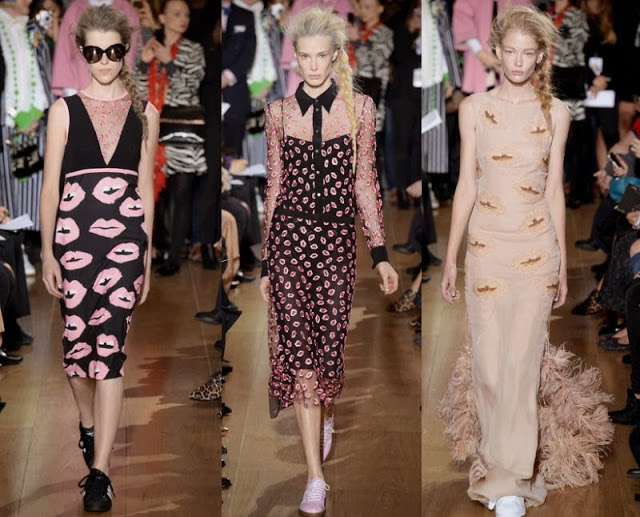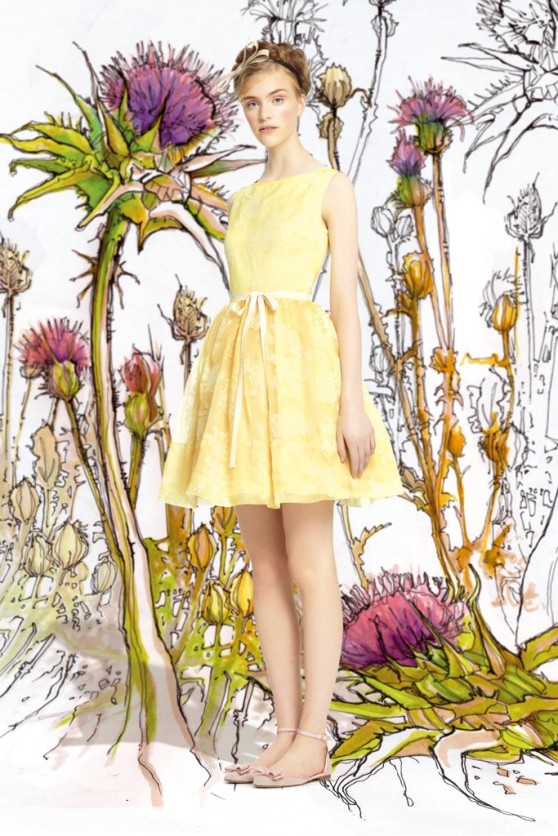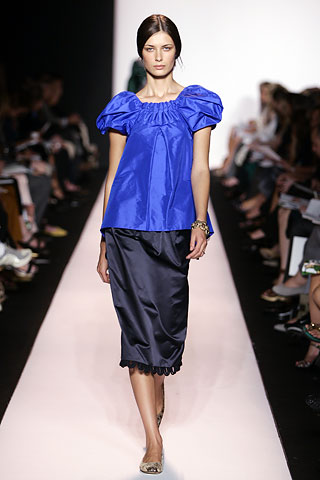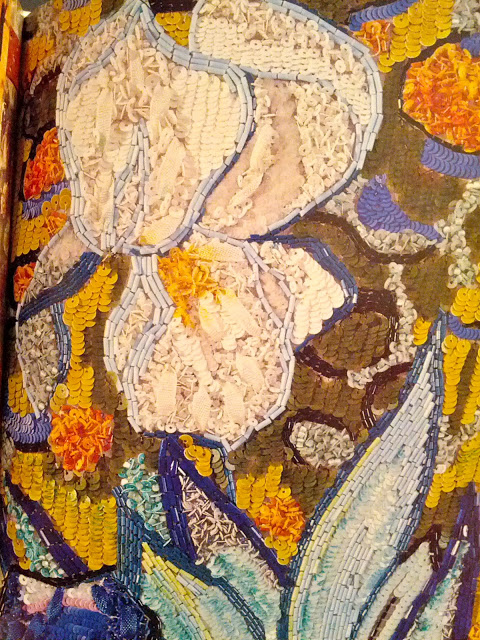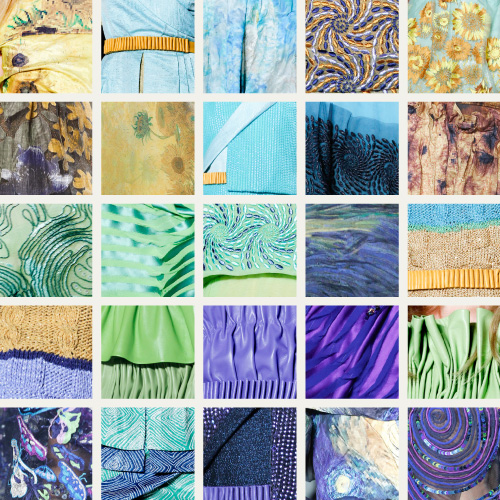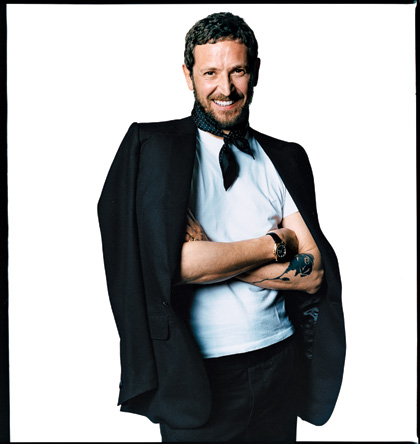“Dovunque al mondo lo Yankee vagabondo
si gode e traffica
sprezzando rischi.
Affonda l’áncora alla ventura…
Affonda l’áncora alla ventura
finchè una raffica
scompigli nave e ormeggi, alberatura.
La vita ei non appaga
se non fa suo tesor
i fiori d’ogni plaga,…
…d’ogni bella gli amor.”
(The whole world over,
on business and pleasure,
the Yankee travels all danger scorning.
His anchor boldly he casts at random…
…His anchor boldly he casts at random,
until a sudden squall
upsets his ship, then up go sails and rigging.
And life is not worth living
if he can’t win the best
and fairest of each country,…
…and the heart of each maid.)
Dovunque al mondo (Throughout the world).
Aria From Act I


Madama Butterfly (Madame Butterfly) is an opera in three acts (originally two acts) by Giacomo Puccini, with an Italian libretto by Luigi Illica and Giuseppe Giacosa. The libretto of the opera is based in part on the short story Madame Butterfly (1898) by John Luther Long – which in turn was based partially on stories told to Long by his sister Jennie Correll and partially on the semi-autographical 1887 French novel Madame Chrysanthème by Pierre Loti.
Long’s short story was dramatized by David Belasco as a one-act play, Madame Butterfly: A Tragedy of Japan (1900). After premiering in New York, Belasco’s play moved to London, where Puccini saw it in the summer of 1900.

Puccini wrote five versions of the opera. The original version in two-acts, which was presented at the world premiere at La Scala on 17 February 1904, was withdrawn after the disasterous premiere. Puccini then substantially rewrote it, this time in three acts. This second version was performed on 28 May 1904 in Brescia, where it was a great success. It was this second version that premiered in the United States in 1906, first in Washington, D.C., in October, and then in New York in November, performed by Henry Savage‘s New English Opera Company (so named because it performed in English-language translations). Madama Butterfly is a staple of the standard operatic repertoire for companies around the world, ranking 7th in the Operabase list of the most-performed operas worldwide.
ACT 1
In 1904, a U.S. Naval officer named Pinkerton rents a house on a hill in Nagasaki, Japan, for him and his soon-to-be wife, “Butterfly”. Her real name is Ciocio-san, (cio-cio, pronounced “chocho”: the Japanese word for “butterfly” is chō 蝶). She is a 15-year-old Japanese girl whom he is marrying for convenience, since he intends to leave her once he finds a proper American wife, and since Japanese divorce laws are very lax. The wedding is to take place at the house. Butterfly had been so excited to marry an American that she had earlier secretly converted to Christianity. After the wedding ceremony, her uninvited uncle, a bonze, who has found out about her conversion, comes to the house, curses her and orders all the guests to leave, which they do while renouncing her. Pinkerton and Butterfly sing a love duet and prepare to spend their first night together.
ACT 2
Three years later, Butterfly is still waiting for Pinkerton to return, as he had left shortly after their wedding. Her maid Suzuki keeps trying to convince her that he is not coming back, but Butterfly will not listen to her. Goro, the marriage broker who arranged her marriage, keeps trying to marry her off again, but she won’t listen to him either. The American Consul, Sharpless, comes to the house with a letter which he has received from Pinkerton which asks him to break some news to Butterfly, that Pinkerton is coming back to Japan, but Sharpless cannot bring himself to finish it because Butterfly becomes very excited to hear that Pinkerton is coming back. Sharpless asks Butterfly what she would do if Pinkerton were not to return. She then reveals that she gave birth to Pinkerton’s son after he had left and asks Sharpless to tell him.
ACT 3
Suzuki wakes up in the morning and Butterfly finally falls asleep. Sharpless and Pinkerton arrive at the house, along with Pinkerton’s new American wife, Kate. They have come because Kate has agreed to raise the child. But, as Pinkerton sees how Butterfly has decorated the house for his return, he realizes he has made a huge mistake. He admits that he is a coward and cannot face her, leaving Suzuki, Sharpless and Kate to break the news to Butterfly. Agreeing to give up her child if Pinkerton comes himself to see her, she then prays to statues of her ancestral gods, says goodbye to her son, and blindfolds him. She places a small American flag into his hands and goes behind a screen, cutting her throat with her father’s hara-kiri knife. Pinkerton rushes in. He is too late.
From the hill house, Butterfly sees Pinkerton’s ship arriving in the harbour. She and Suzuki prepare for his arrival, and then they wait. Suzuki and the child fall asleep, but Butterfly stays up all night waiting for him to arrive.
Although almost no singing occurs during the film, much of the underscoring is from or based on Puccini’s opera Madama Butterfly, and much of it in the corresponding places of where it would occur in the opera
ADAPTATIONS
 Mary Pickford, wearing a peacock feather printed kimono, writing at a desk. Silent film version of Madame Butterfly (Sidney Olcott, 1915). Olcott, reportedly wanted Pickford to be more reserved and Oriental and walked off the set in protest of her too Americanized Cio Cio San
Mary Pickford, wearing a peacock feather printed kimono, writing at a desk. Silent film version of Madame Butterfly (Sidney Olcott, 1915). Olcott, reportedly wanted Pickford to be more reserved and Oriental and walked off the set in protest of her too Americanized Cio Cio San
 The Toll of the Sea (Chester M. Franklin, 1922). The plot was a variation of the Madama Butterfly story, set in China instead of Japan. It was the second two-color Technicolor motion picture ever released and the first film made using Technicolor Process 2
The Toll of the Sea (Chester M. Franklin, 1922). The plot was a variation of the Madama Butterfly story, set in China instead of Japan. It was the second two-color Technicolor motion picture ever released and the first film made using Technicolor Process 2
 Madame Butterfly (Marion Gering, 1932). A non-singing drama made by Paramount starring Sylvia Sidney and Cary Grant in black and white. Although almost no singing occurs during the film, much of the underscoring is from or based on Puccini’s opera Madama Butterfly, and much of it in the corresponding places of where it would occur in the opera
Madame Butterfly (Marion Gering, 1932). A non-singing drama made by Paramount starring Sylvia Sidney and Cary Grant in black and white. Although almost no singing occurs during the film, much of the underscoring is from or based on Puccini’s opera Madama Butterfly, and much of it in the corresponding places of where it would occur in the opera
 The film Fatal Attraction (Adrian Lyne, 1987) starring Michael Douglas and Glenn Close makes several references to Madame Butterfly, and the soundtrack features extracts from the opera. Scorned and dangerously obsessed former lover Alex Forrest (Close) finds comfort in and identifies heavily with Cio-Cio San. The original, abandoned ending of the film shows Alex committing suicide in an identical fashion as Cio-Cio San while Un bel dì plays in the background
The film Fatal Attraction (Adrian Lyne, 1987) starring Michael Douglas and Glenn Close makes several references to Madame Butterfly, and the soundtrack features extracts from the opera. Scorned and dangerously obsessed former lover Alex Forrest (Close) finds comfort in and identifies heavily with Cio-Cio San. The original, abandoned ending of the film shows Alex committing suicide in an identical fashion as Cio-Cio San while Un bel dì plays in the background
 Miss Saigon is a musical by Claude-Michel Schönberg and Alain Boublil, with lyrics by Boublil and Richard Maltby, Jr. premièred at the Theatre Royal, Drury Lane, London, on 20 September 1989. It is based on Giacomo Puccini’s opera Madame Butterfly, and similarly tells the tragic tale of a doomed romance involving an Asian woman abandoned by her American lover. The setting of the plot is relocated to the 1970s Saigon during the Vietnam War, and Madame Butterfly’s story of marriage between an American lieutenant and Japanese girl is replaced by a romance between an American GI and a Vietnamese bar girl
Miss Saigon is a musical by Claude-Michel Schönberg and Alain Boublil, with lyrics by Boublil and Richard Maltby, Jr. premièred at the Theatre Royal, Drury Lane, London, on 20 September 1989. It is based on Giacomo Puccini’s opera Madame Butterfly, and similarly tells the tragic tale of a doomed romance involving an Asian woman abandoned by her American lover. The setting of the plot is relocated to the 1970s Saigon during the Vietnam War, and Madame Butterfly’s story of marriage between an American lieutenant and Japanese girl is replaced by a romance between an American GI and a Vietnamese bar girl
 M Butterfly (David Cronenberg, 1993). The screenplay was written by David Henry Hwang based on his play of the same name
M Butterfly (David Cronenberg, 1993). The screenplay was written by David Henry Hwang based on his play of the same name
 Pinkerton is the second studio album by the American alternative rock band Weezer, released on September 24, 1996. the album is named after the character BF Pinkerton from Giacomo Puccini’s 1904 opera Madama Butterfly, whom Rivers Cuomo described as an “asshole American sailor similar to a touring rock star”. Like the opera, the album contains references to Japan and Japanese culture
Pinkerton is the second studio album by the American alternative rock band Weezer, released on September 24, 1996. the album is named after the character BF Pinkerton from Giacomo Puccini’s 1904 opera Madama Butterfly, whom Rivers Cuomo described as an “asshole American sailor similar to a touring rock star”. Like the opera, the album contains references to Japan and Japanese culture
 The artwork on the album’s cover is Kambara yoru no yuki (Night snow at Kambara), an ukiyo-e print by Hiroshige
The artwork on the album’s cover is Kambara yoru no yuki (Night snow at Kambara), an ukiyo-e print by Hiroshige
 Behind the album’s CD tray is a map with the title “Isola della farfalla e penisola di cane” (Italian for “Island of the Butterfly and Peninsula of Dog”). On the map are a ship named USS Pinkerton and “Mykel and Carli Island”, an allusion to Weezer’s fan club founders. In a 2005 appearance on The Howard Stern Show, Cuomo explained that the names listed on the map are those who influenced him during the writing of the album, with Howard Stern being one of those influences
Behind the album’s CD tray is a map with the title “Isola della farfalla e penisola di cane” (Italian for “Island of the Butterfly and Peninsula of Dog”). On the map are a ship named USS Pinkerton and “Mykel and Carli Island”, an allusion to Weezer’s fan club founders. In a 2005 appearance on The Howard Stern Show, Cuomo explained that the names listed on the map are those who influenced him during the writing of the album, with Howard Stern being one of those influences
For more information visit The Genealogy of Style’s Facebook page:
https://www.facebook.com/pages/The-Genealogy-of-Style/597542157001228?ref=hl



















